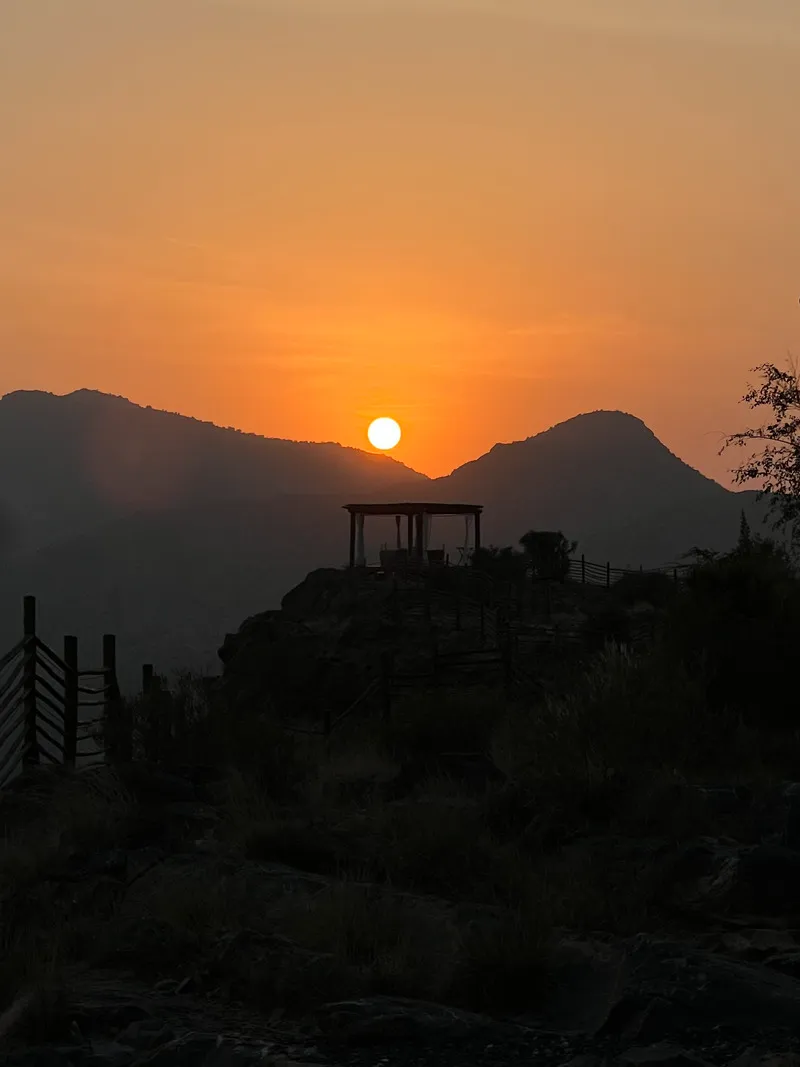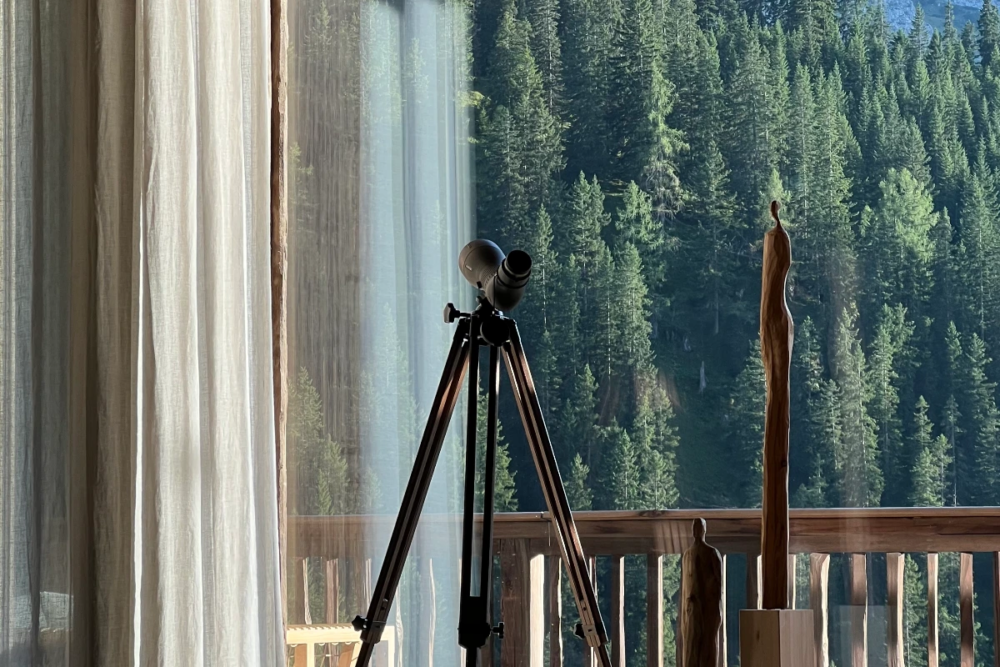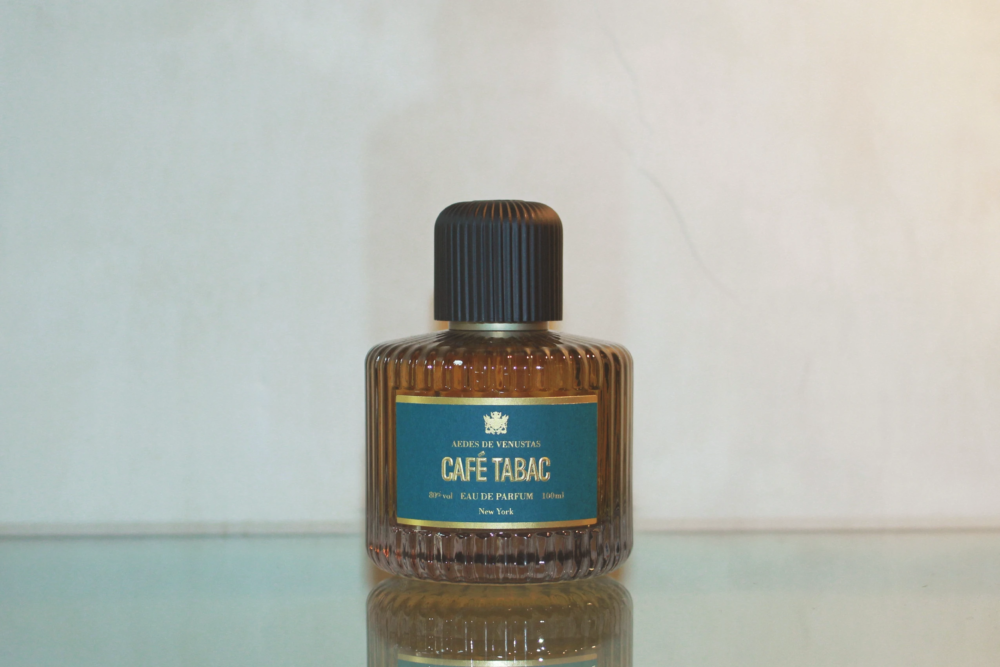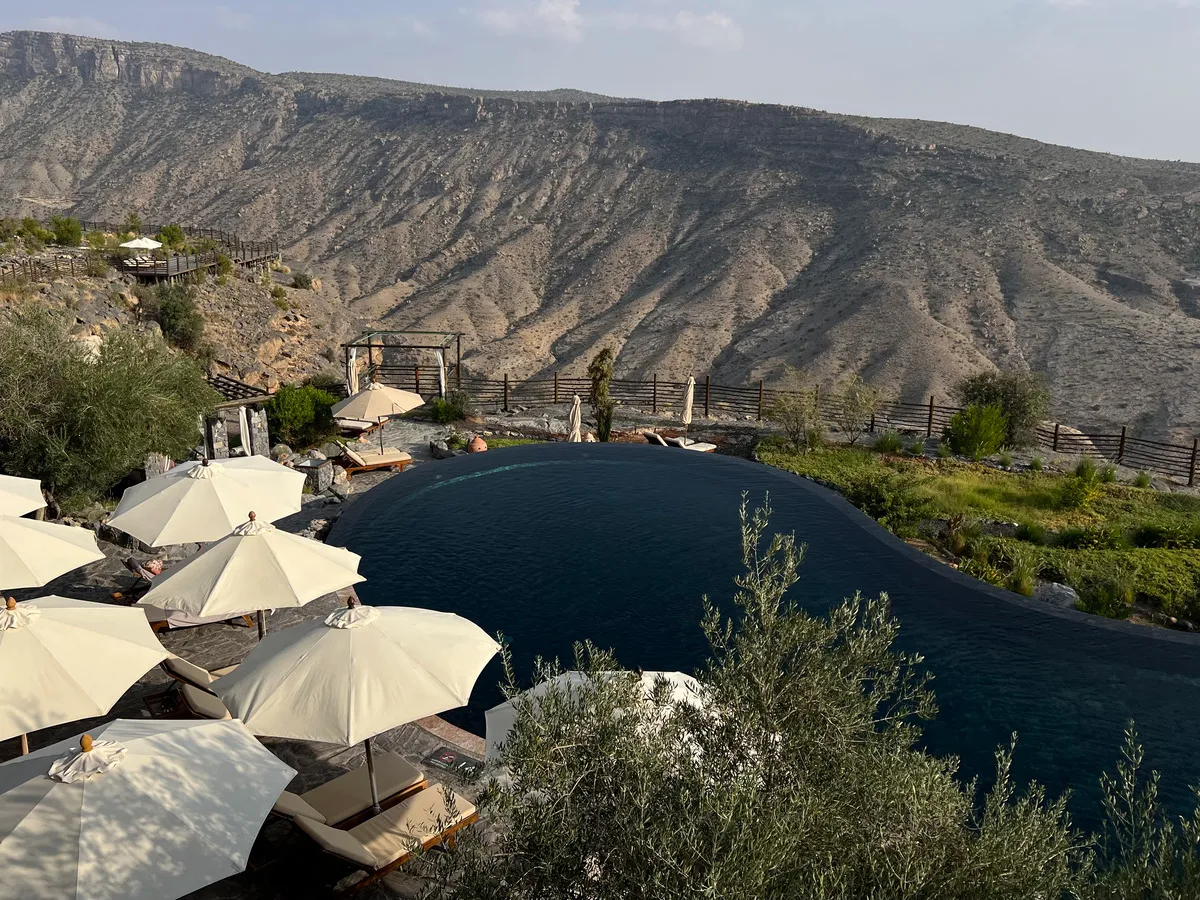
Between Roses and Stone: Alila Jabal Akhdar, Oman’s Green Mountain Retreat
Perched two thousand meters above the Omani desert, Alila Jabal Akhdar is built from local stone, powered by sun and wind, and scented by the region’s wild roses
Arabian Roses and Mountains in the Desert: Alila Jabal Akhdar
In Oman, roses grow on mountains. They rise from terraces cut into the slopes of the Al Hajar range, blooming in gullies where streams run in spring and silence reigns the rest of the year. Their perfume drifts over stone walls, mingling with juniper and pomegranate trees, softening the harshness of rock and wind. From these heights, the desert below feels like another world. At night, under skies unpolluted by light, you can count shooting stars until sleep overtakes you — the mountains holding you in their cool, rarefied air.
The journey to this remote plateau begins long before you arrive. Flights from Europe reach Muscat at dawn, when the light on the Gulf is pink and clear. From there, the road into the mountains winds upward for more than two hours, past dry wadis and copper-colored plains. The last stretch is steep and restricted to four-wheel-drive vehicles. At the police checkpoint, the asphalt narrows and the altitude begins to alter perception: the air thins, the horizon opens, and the heat fades. By the time you reach Alila Jabal Akhdar, you are nearly 2,000 meters above sea level — in a landscape that feels suspended between desert and sky.
The Green Mountain: Where Oman’s Roses Bloom and Time Slows Down
“Jabal Akhdar” means “The Green Mountain,” and the name is no exaggeration. Though much of Oman is defined by sand and stone, this plateau holds unexpected fertility. In spring, fields of damask roses bloom, and villagers harvest their petals to distill the rose water that perfumes every Omani home. In summer, temperatures here are almost 15 degrees cooler than on the coast, making it a refuge from the oppressive heat of Muscat. Winters are crisp, and sometimes frost whitens the terraces at dawn. Life here follows the rhythm of altitude — slower, quieter, dictated by the mountain’s moods.
The resort occupies a dramatic position at the edge of a canyon, overlooking vast gorges that slice through the highlands. From the terrace, the earth drops away abruptly, and the horizon is a theatre of light and shadow. This is a region of both beauty and isolation: small villages cling to the slopes, their stone houses blending into the rock, while goats graze along dry riverbeds. The feeling is of being at the end of the world — or perhaps at its beginning.
Inside, the atmosphere is both minimal and warm. Natural materials dominate: rough-hewn stone, pale woods, woven fabrics in earth tones. Omani patterns appear discreetly in textiles and carved panels. The lobby is centered around a wide fireplace, with dates, mint tea, and the scent of frankincense welcoming new arrivals. Light filters through latticed windows, changing color with the sun.
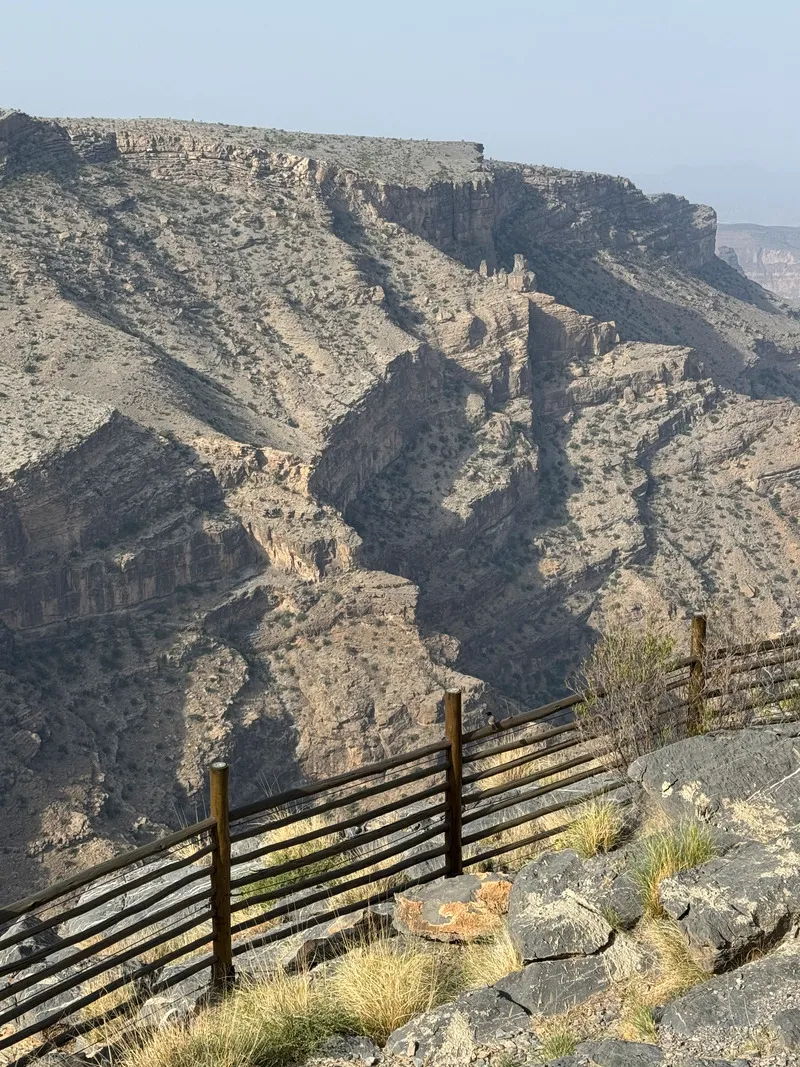
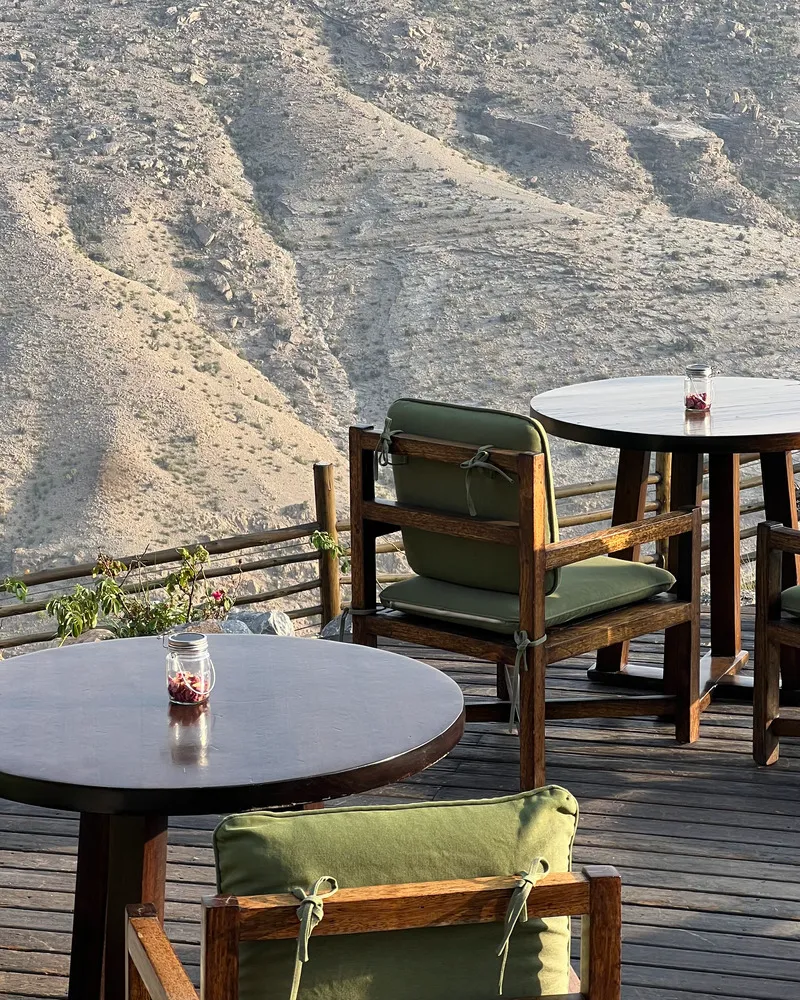
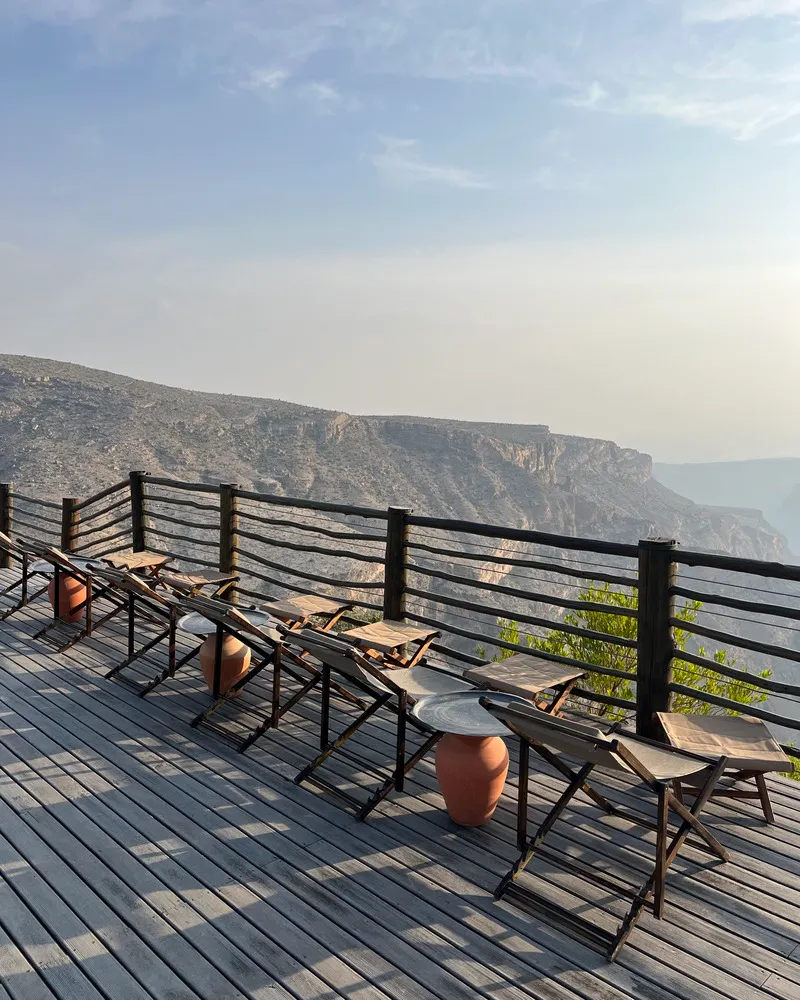
Sculpted by Nature: The LEED-Certified Eco-Luxury Architecture of Alila Jabal Akhdar
Alila Jabal Akhdar was conceived as part of its surroundings rather than apart from them. The architecture, built largely from local grey stone and timber, mirrors the geology of the plateau. Low, flat-roofed structures cluster along the ridge, designed to merge with the rock and withstand the extremes of temperature. The effect is one of quiet permanence. The buildings could have been there for centuries — austere yet organic, softened by texture and proportion.
Sustainability here is not decoration but design. Alila Jabal Akhdar holds LEED Silver certification, a global benchmark for green architecture, placing it among the most environmentally progressive resorts in the Middle East. Every decision — from the sourcing of materials to the structure itself — was guided by the goal of harmony with the landscape. Thick stone walls, shaded courtyards, and natural cross-ventilation replace energy-hungry systems. Solar panels heat much of the water; motion-sensitive lighting conserves electricity. A self-contained wastewater treatment plant recycles grey water for irrigation, keeping the plateau’s scarce resources intact.
Rainwater is harvested, plastic bottles are absent, and biodegradable products replace chemicals wherever possible. Local stone and timber were chosen not only for aesthetics but to reduce transport emissions. Even the resort’s orientation — angled toward prevailing winds and away from the harshest sun — reflects a deep understanding of how nature can become part of architecture’s machinery.
This commitment extends to community partnerships: local artisans built much of the stonework, while small workshops in Nizwa crafted lamps, ceramics, and textiles. The result is a kind of living sustainability — not a checklist, but a culture. Guests experience comfort without waste, luxury without excess, and a quiet awareness that what is beautiful here must also be protected.
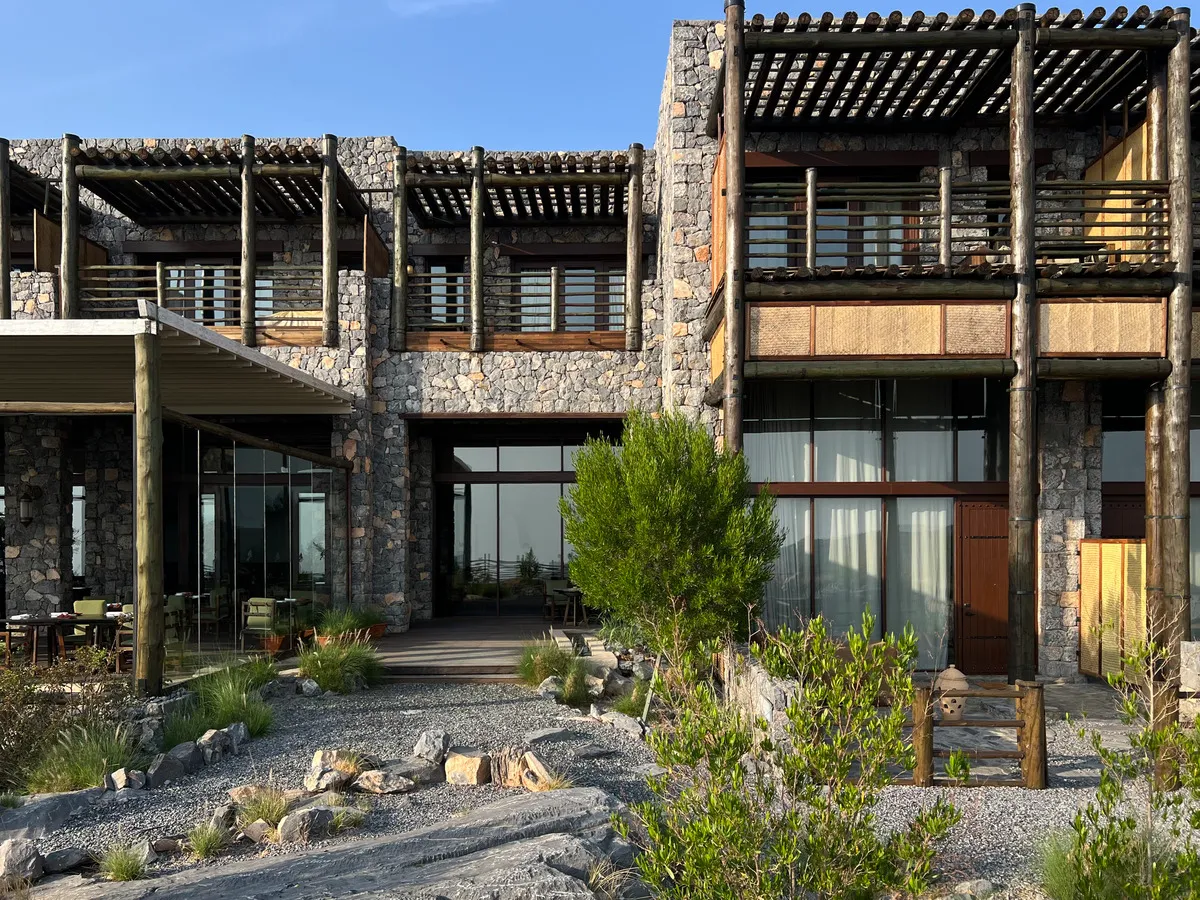
Rooms on the Edge of the World: Serenity and Silence with a Sustainable Soul
There are eighty-four suites and two villas, arranged in small clusters that follow the contours of the cliff. Each suite opens toward the mountains, with terraces or balconies framing wide views of the gorge. The interiors are quiet sanctuaries: spacious bathrooms with freestanding stone tubs, rain showers, double vanities, and the scent of cedar in the air. In the larger units, bedrooms flow into lounges and private patios; the most desirable suites occupy the far ends of the property, where nothing interrupts the view or the silence.
Locally sourced stone and wood, handwoven textiles, and clay lamps crafted in Nizwa workshops root the design in place. The palette is restrained — ochres, sand, basalt grey — allowing the changing light to color the rooms naturally.
The two villas are expansive: private pools, firepits, and living spaces large enough to host a small gathering. They embody the resort’s philosophy — discreet luxury without ostentation, designed for introspection rather than display.
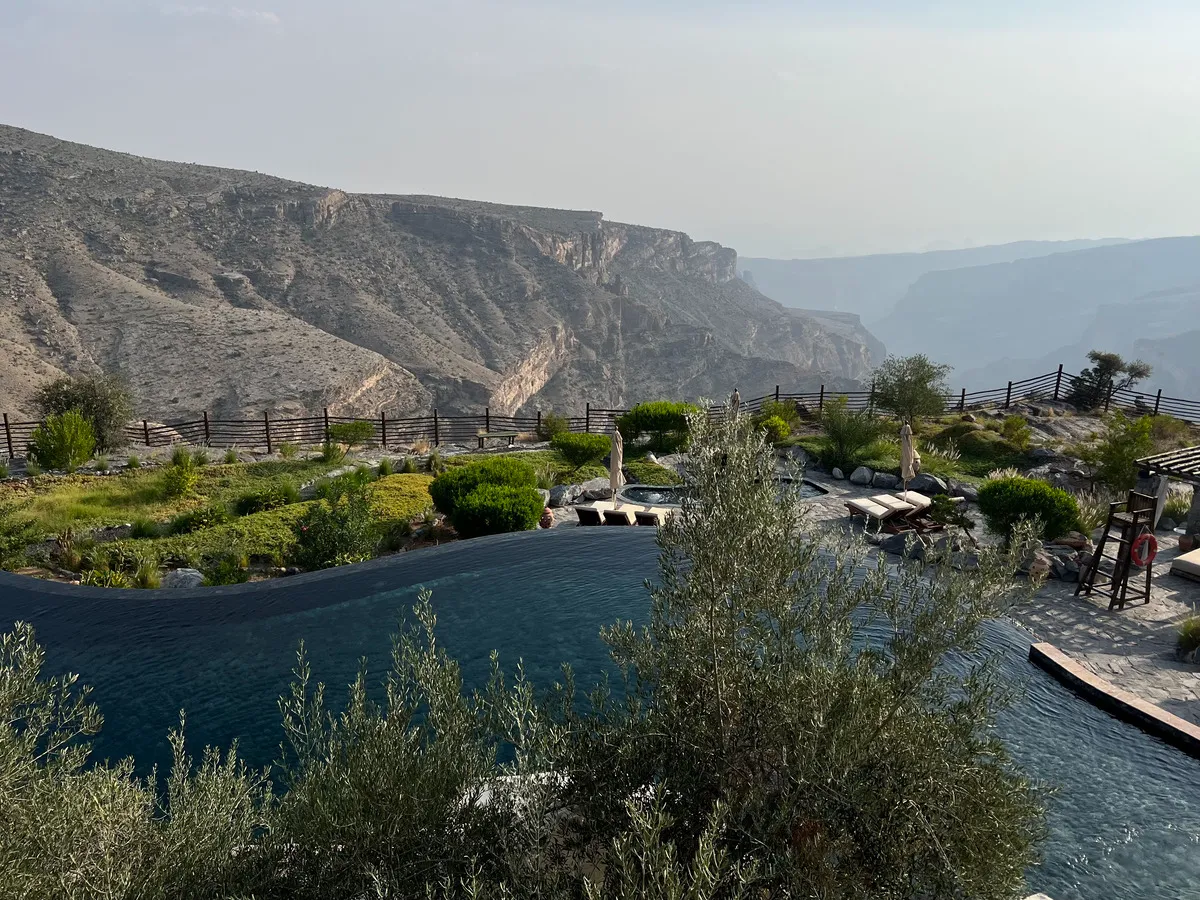
Culinary Consciousness: Farm-to-Table Dining on Oman’s Rooftop
The main building is both refuge and gathering place. At its center is the Juniper Restaurant, named after the hardy trees that dot the mountain slopes. The cuisine is rooted in the region but never heavy-handed: Omani dishes appear alongside Mediterranean and international influences, all presented with restraint. Locally grown produce, mountain herbs, and fresh pomegranate juice mark the menus. Many ingredients come from nearby farms on the plateau or from small producers in Nizwa, ensuring that what guests eat sustains local livelihoods as well as their own experience.
Breakfast is served à la carte, beginning with fruits, pastries, and mezze, followed by eggs or pancakes infused with rosewater and cardamom. The Rose Lounge, with its patterned cushions and carved wood screens, offers lighter meals and tea. At sunset, guests gather here for the fading light and the slow cooling of the air. Alcohol is limited by local regulation — a detail some visitors notice, though few seem to mind in this atmosphere of contemplation. The focus is on flavor, community, and ritual rather than indulgence.
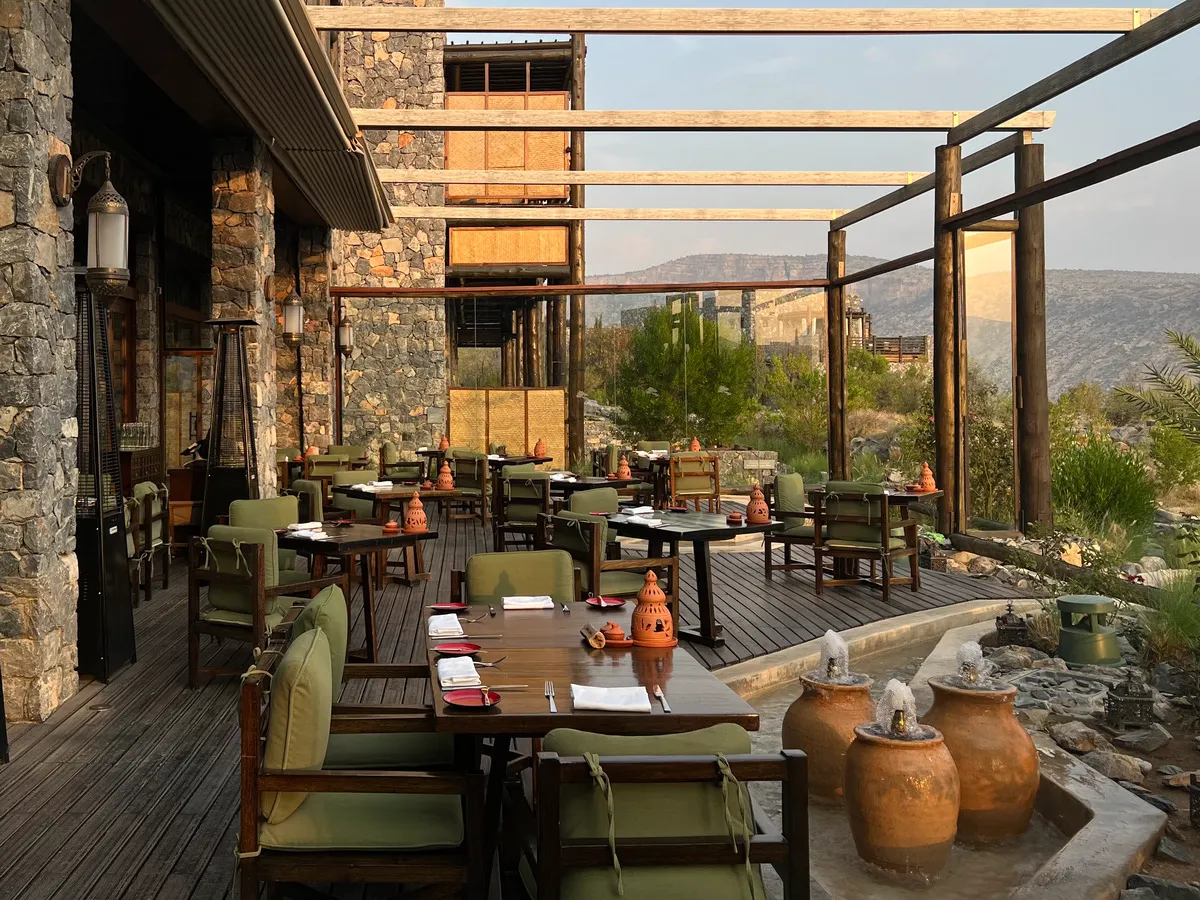
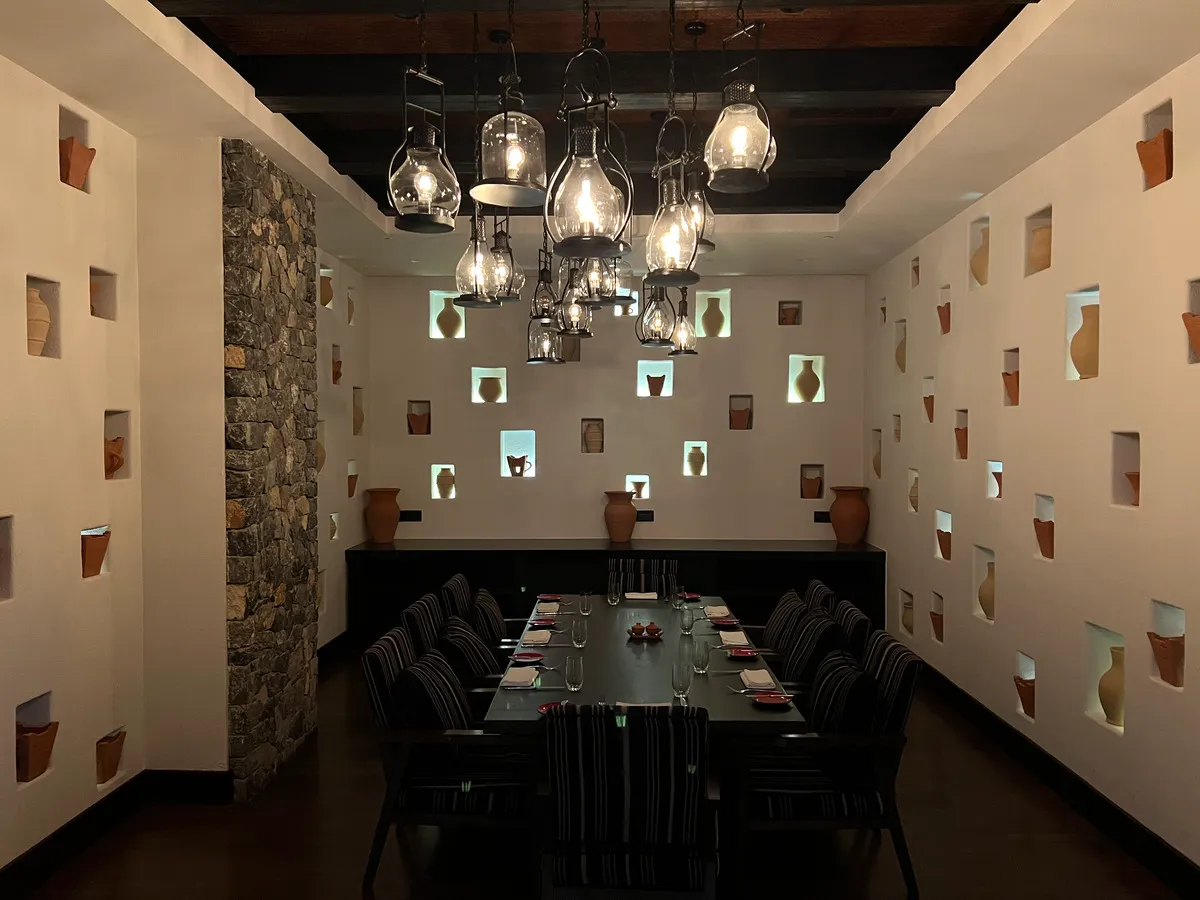
Alila Jabal Akhdar, the Spa: perfumed with frankincense and lavender
The Spa Alila occupies a quieter wing, perfumed with frankincense and lavender. Treatments draw on traditional Omani techniques: hot-stone massages with mountain herbs, rose-water facials, and body scrubs using Omani salt. The spa’s oils and scrubs are handmade from locally sourced botanicals, packed in recyclable containers. Even the staff uniforms are produced by women’s cooperatives supported by the resort’s community fund.
The indoor pool, enclosed in stone and softly lit, feels like a hidden cistern. Nearby, a small gym faces the cliffs, its glass walls framing the horizon. Outside, the infinity pool stretches to the edge of the precipice, merging with the sky at sunset — one of the most photographed views in the country. Here too, water circulation is optimized for minimal loss, and heating relies partially on solar energy.
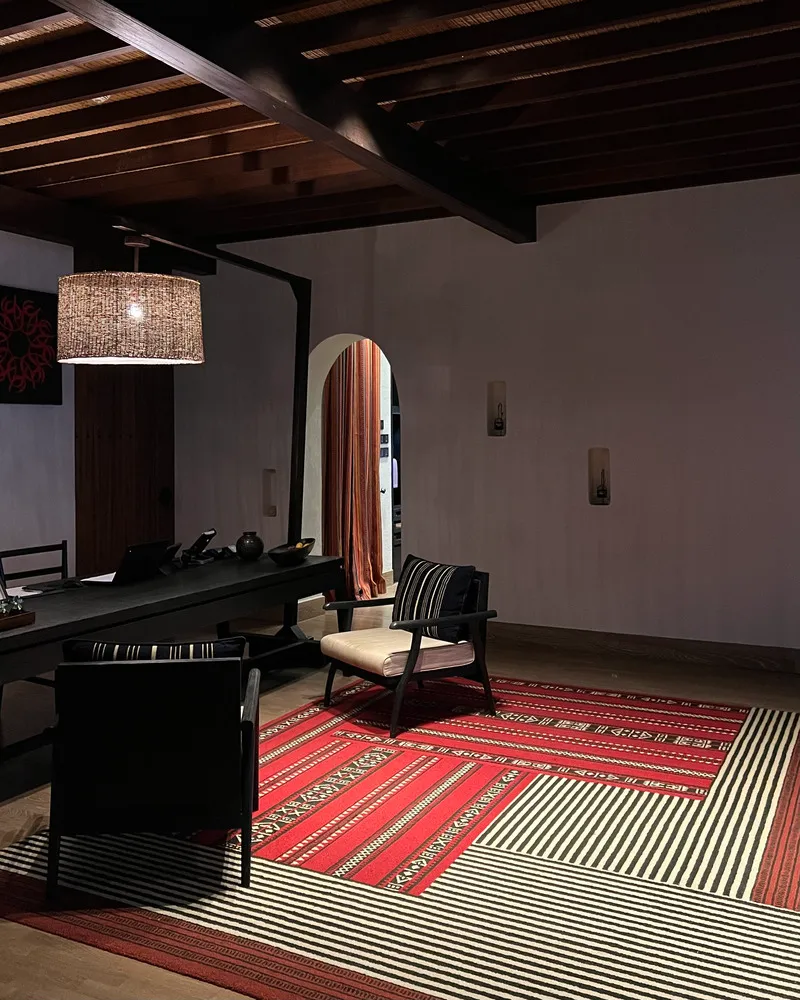
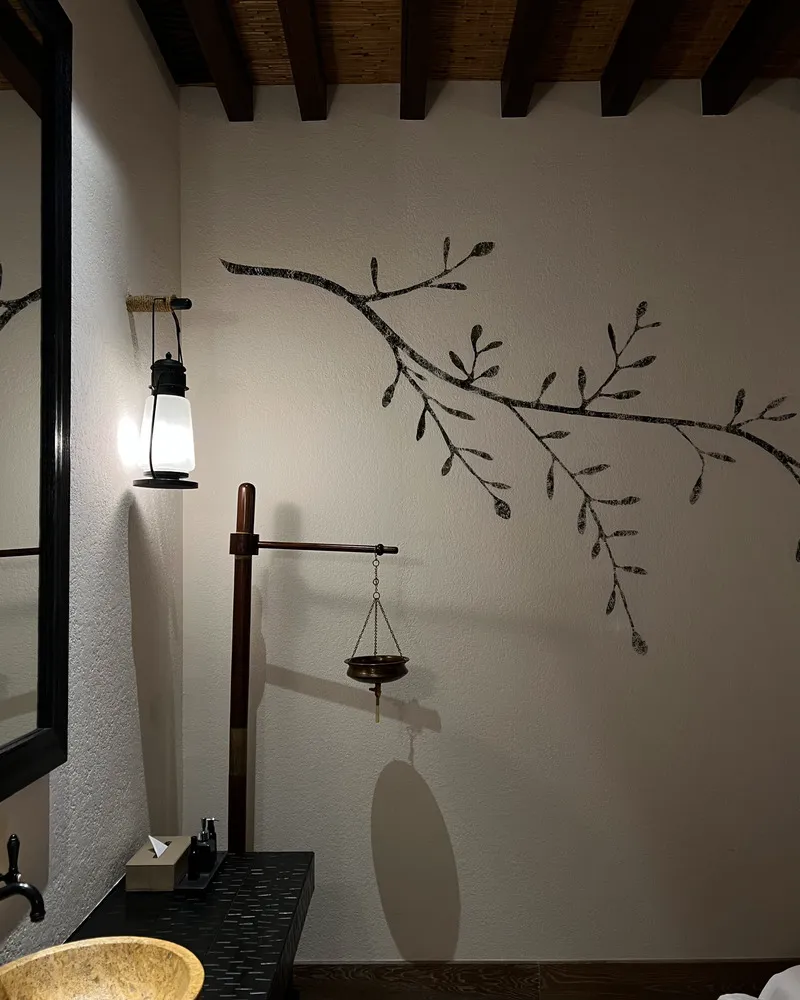
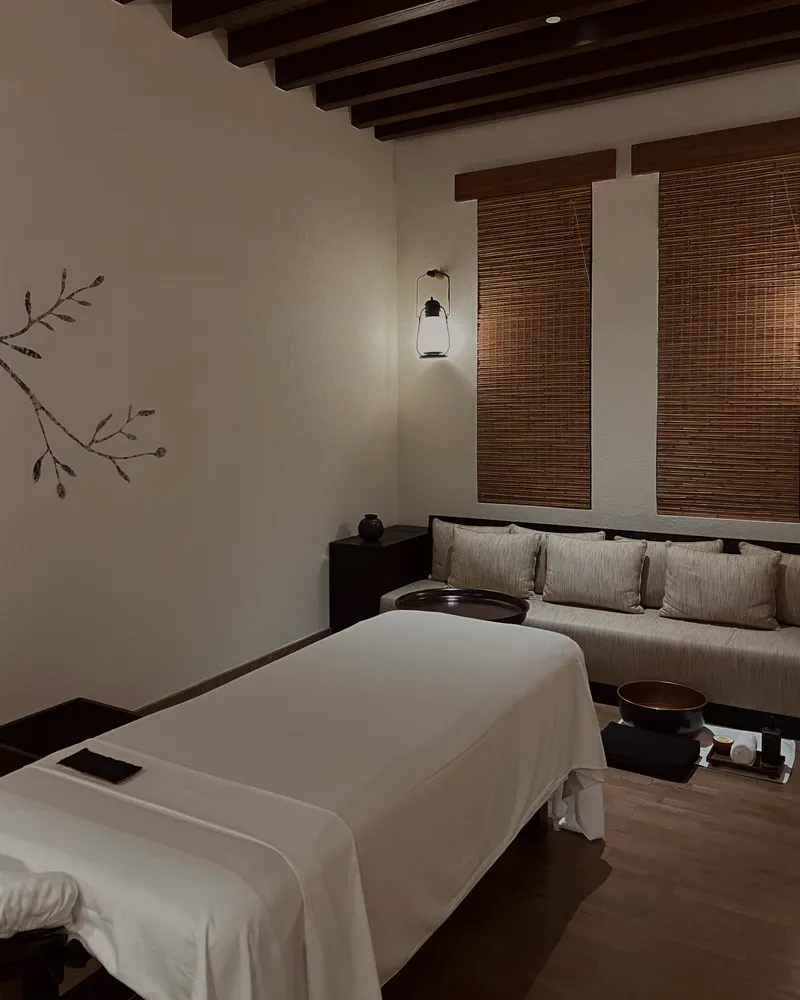
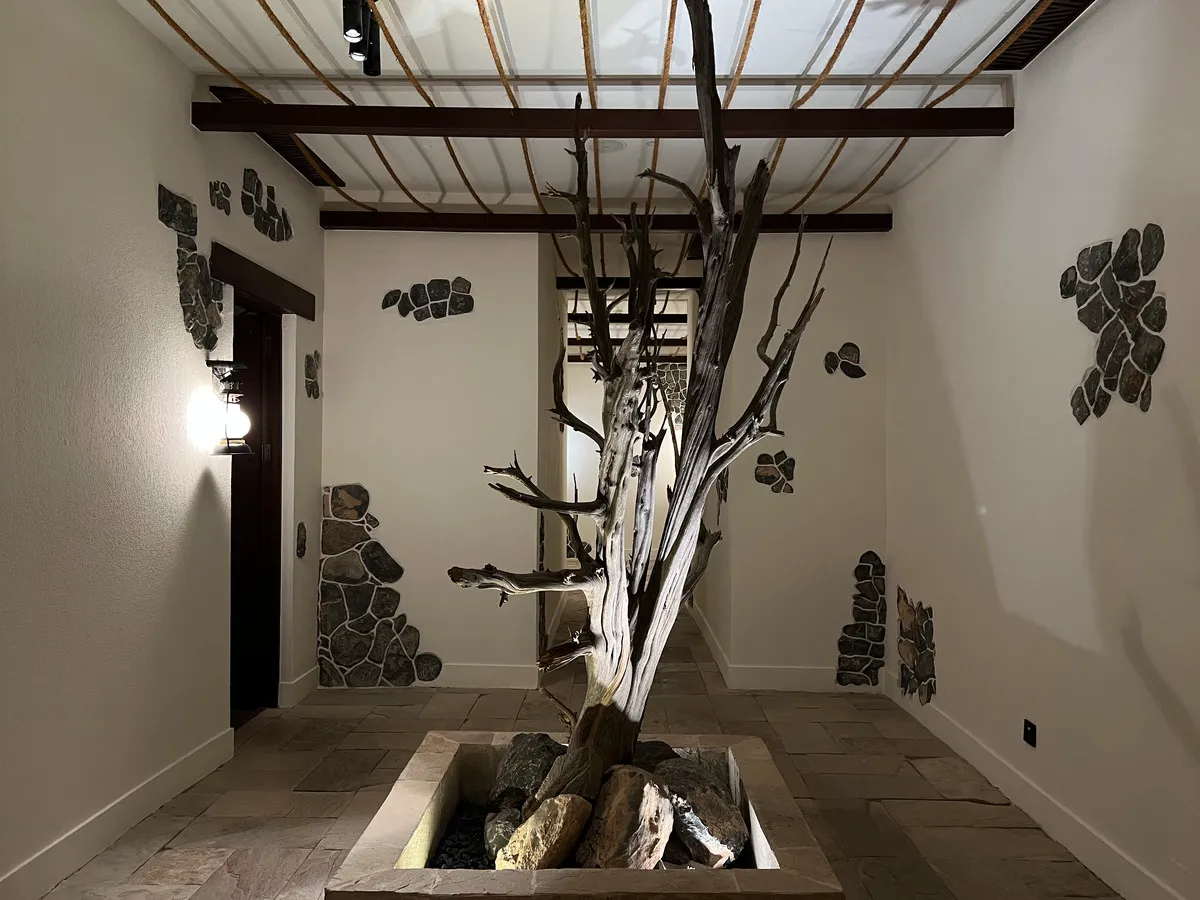
Walking the Plateau: Eco-Adventures Through Villages, Valleys and Time
The essence of Jabal Akhdar lies beyond the resort walls. This is a place to move slowly, to walk and to look. The hotel organizes guided hikes through nearby villages and abandoned settlements — paths once used by shepherds and traders that now serve as routes for travelers seeking solitude. The trails follow terraced fields of roses and pomegranates, cross dry wadis, and climb to ridges where the air smells of juniper and thyme.
Visitors are advised to dress modestly and respectfully: long trousers, covered shoulders, sturdy shoes. The paths often pass through inhabited hamlets, and hospitality here is spontaneous — a cup of coffee, a smile, a brief invitation into a home. Some of the old villages, their walls built from mud and stone, appear medieval yet were inhabited until just a few decades ago. Inside, rooms are small but intricately decorated, with niches for lamps and colorful painted doors. Behind them, stalls for goats are built directly into the rock.
These excursions are not only physical but ethical journeys. The resort employs local guides, supporting families from the surrounding area and helping preserve traditional knowledge of routes, flora, and folklore. Trails are maintained with community participation, and part of each excursion fee funds village projects such as water storage and craft workshops.
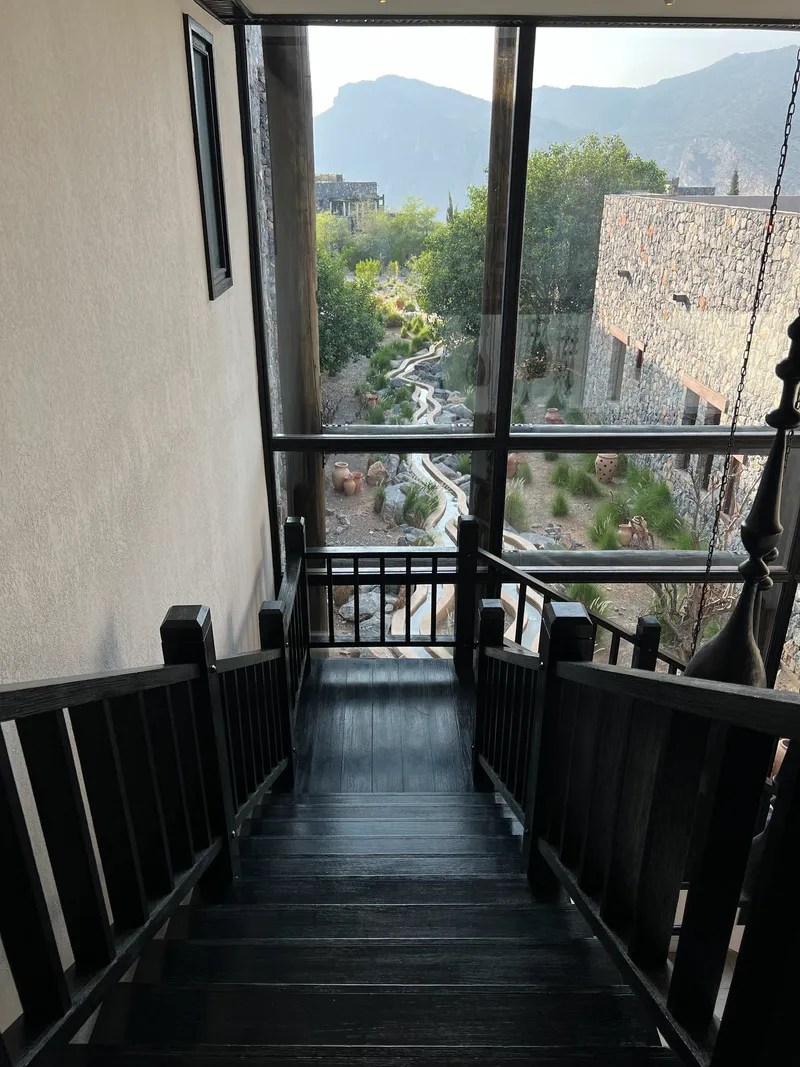
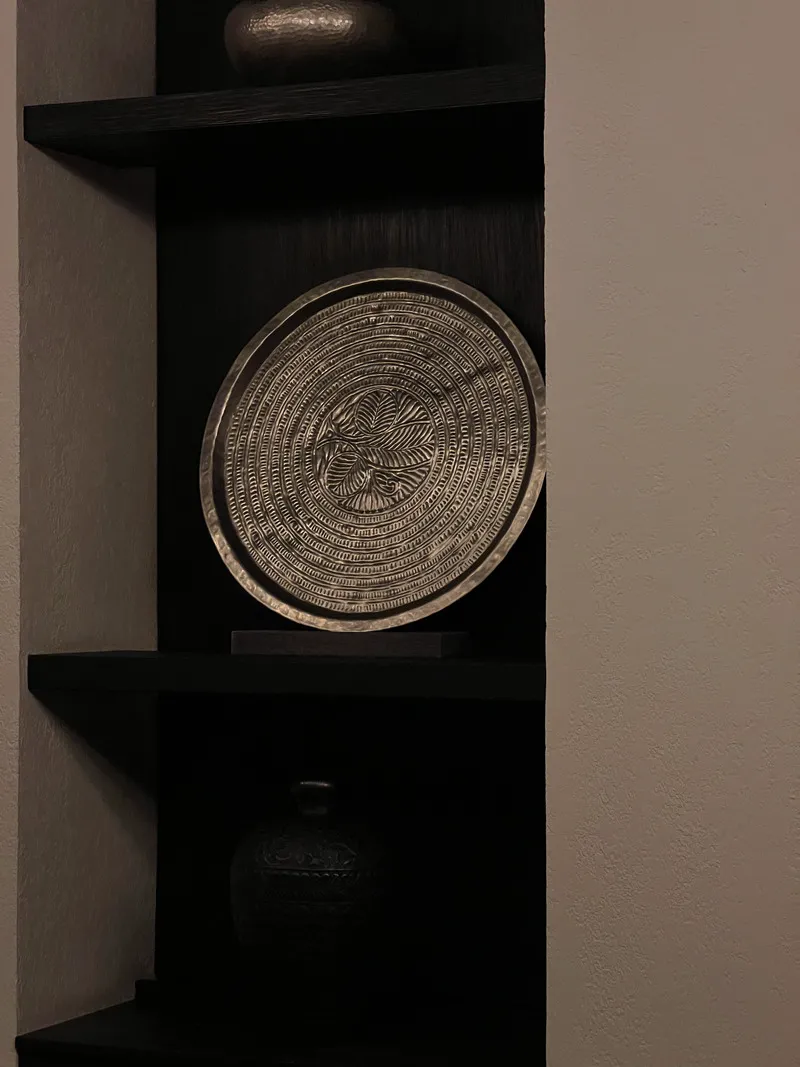
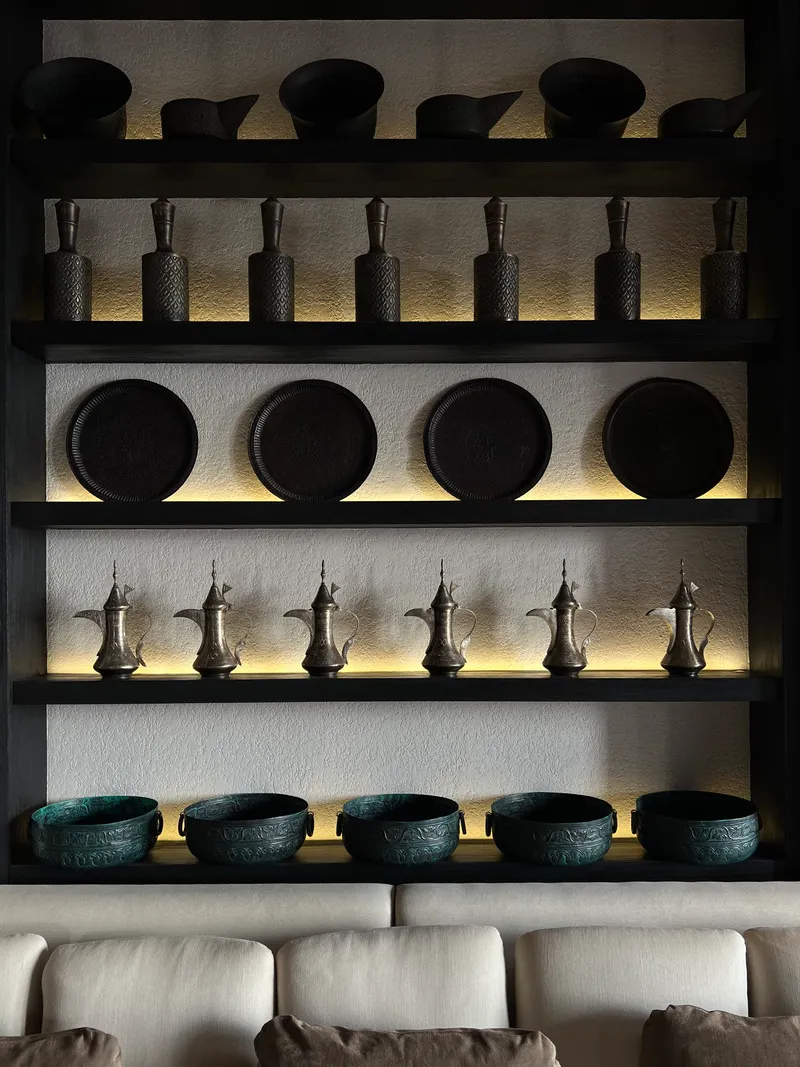
The Season of Roses: When the Mountains Turn to Perfume
From April to May, Jabal Akhdar becomes a sea of pink. The famous damask roses bloom on terraced slopes, their petals collected at dawn and distilled into rose water in small copper alembics. The air fills with fragrance, and even the hotel’s linen and tea are scented with it. Guests can join the harvest, walking to nearby distilleries where families still use centuries-old methods to capture the essence of the flower. The resort purchases much of its rose water and essential oil directly from these artisans, creating a circular local economy.
Later, in the heat of June, the mountains remain temperate while the coast bakes. Locals retreat here for relief, golfing in nearby Nizwa or picnicking among the flowering bushes that survive on every slope. In winter, the chill returns — a time for fireplaces, thick blankets, and the mountain’s deep quiet.
Seasonality defines life on the plateau, and the resort embraces it rather than fighting it: menu ingredients shift with what the land provides; energy consumption is adjusted according to sunlight and wind; and water conservation peaks in the dry months. Even the housekeeping schedule respects natural cycles, minimizing laundry during low humidity periods to save water.
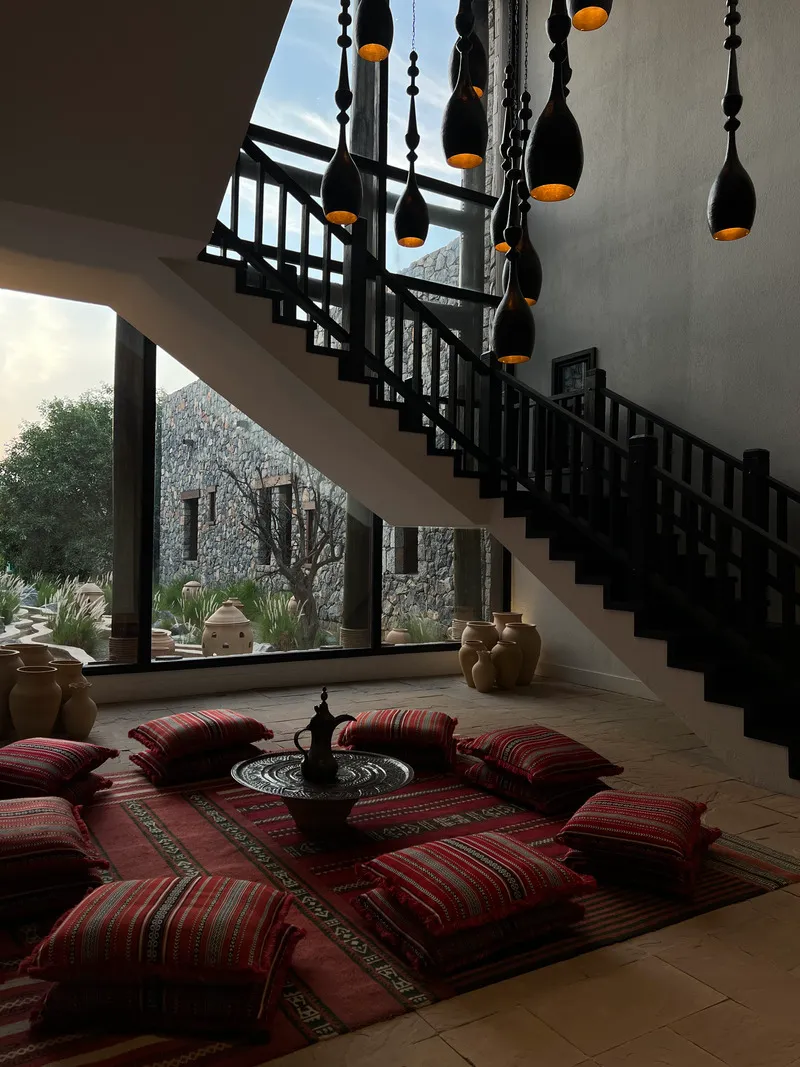
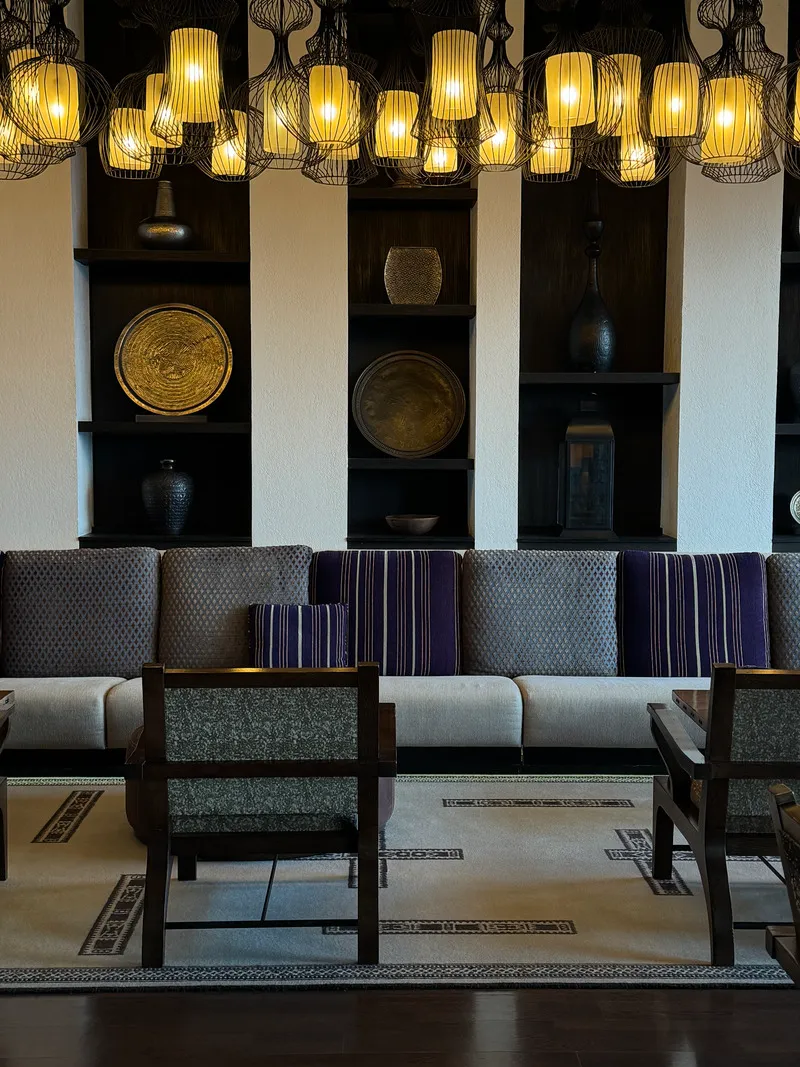
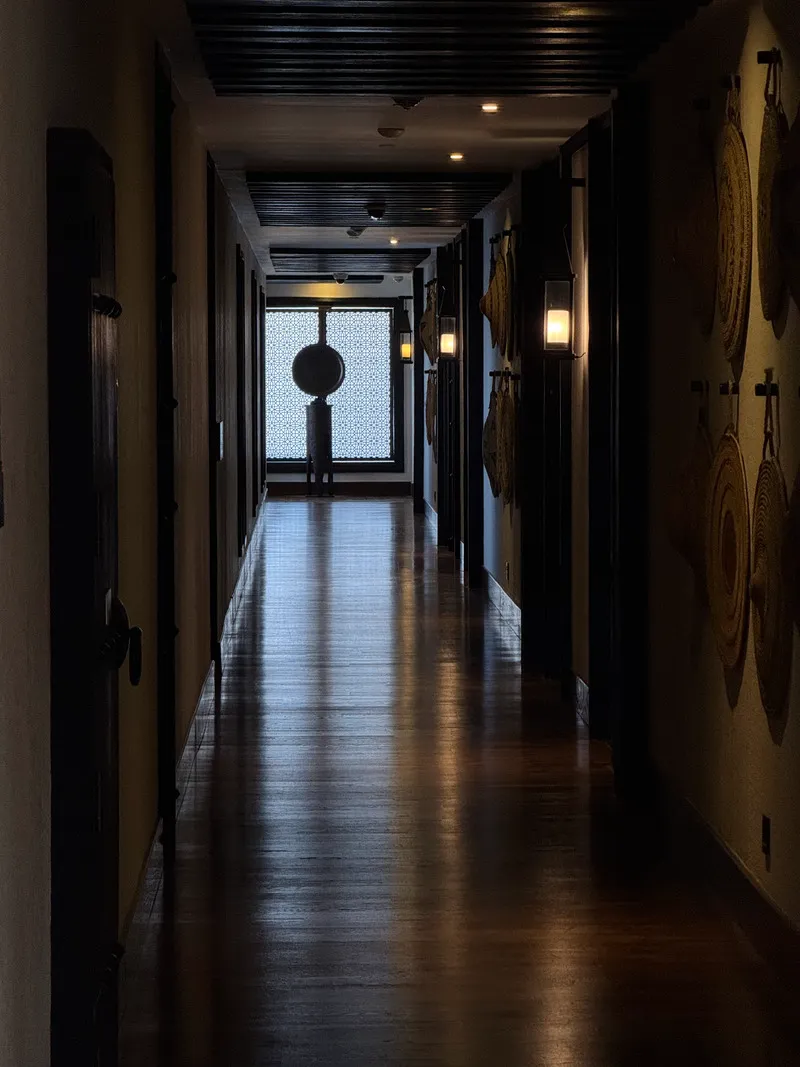
Under a Billion Stars: Nightfall and the Sound of Silence
At Alila, time stretches. Morning light floods the cliffs, and the stone walls of the resort glow ochre and gold. Afternoons invite slow swims or tea in the shade, the sound of wind replacing all human noise. When the sun sets, the temperature drops sharply, and the horizon fades into violet. From the infinity pool, the last light seems to melt into the gorge.
After dark, the sky becomes the main attraction. With almost no light pollution, the constellations appear close enough to touch. On clear nights, the Milky Way crosses the sky in a pale arc, and the air is so still you can hear your own heartbeat. The hotel occasionally hosts astronomy sessions with telescopes, helping guests identify planets and distant stars. For many, this quiet spectacle — more than any luxury amenity — defines the experience of Jabal Akhdar.
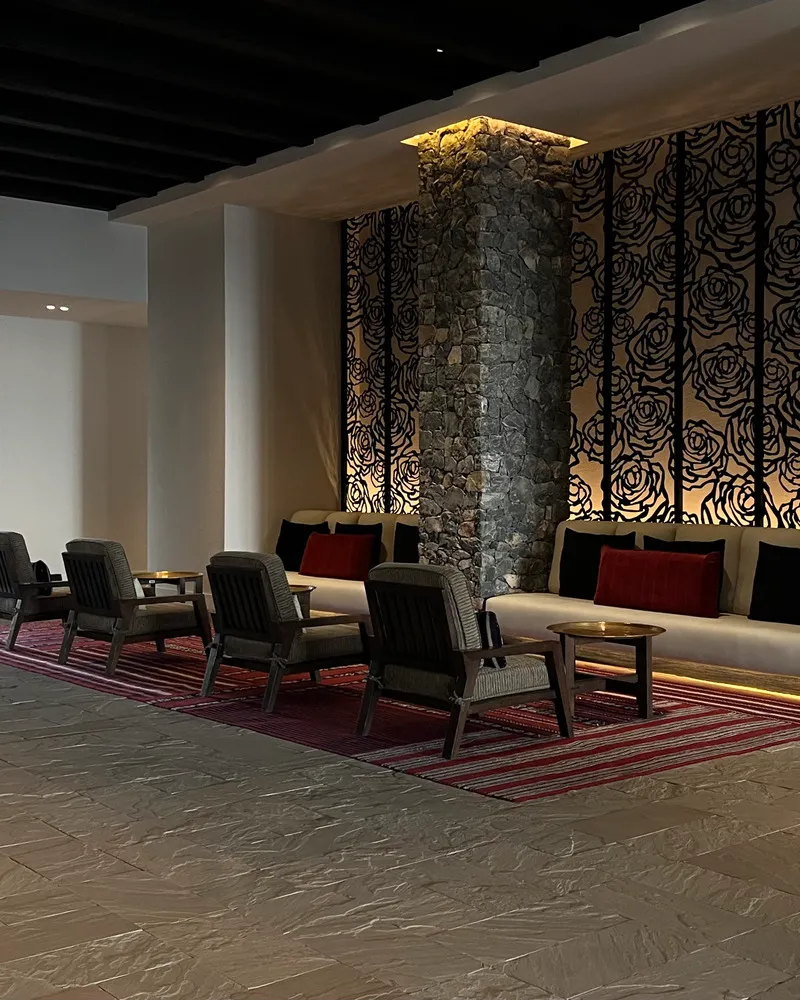
The Culture of Comfort: Mindful Luxury and the Art of Stillness
Inside, the atmosphere is deliberately understated. Service is courteous, warm, sometimes slow, always discreet. The décor combines Omani fabrics embroidered with Kashmiri motifs, opaque green glass lamps, and engraved wood panels. Tea and fruit appear in the afternoon; at night, the fire in the lobby crackles against the mountain cold. Guests read, write, or simply gaze outward. The design invites stillness — a pause in the constant motion of modern travel.
Despite its sophistication, the resort maintains a sense of humility. Luxury here is not excess but ease: space, silence, and the elemental presence of nature. The architecture resists spectacle; it frames the view rather than competing with it. Sustainability underpins every comfort — the invisible network that makes serenity possible without depletion. Every drop of water, every watt of energy, every locally woven fabric speaks of care and continuity.
Text and Images: Matteo Mammoli
